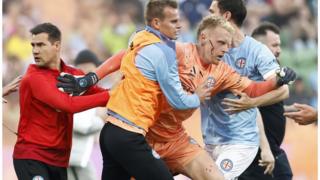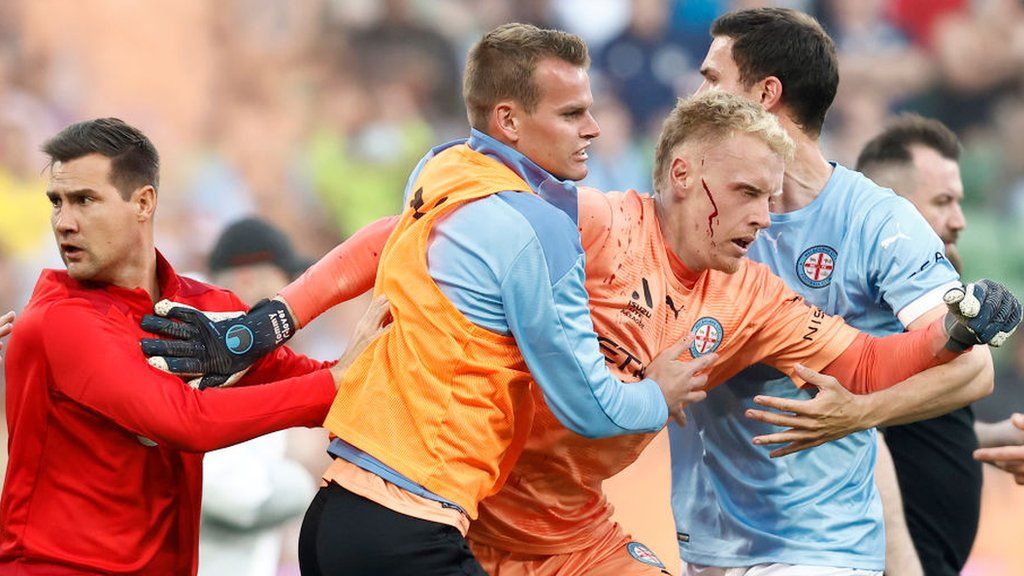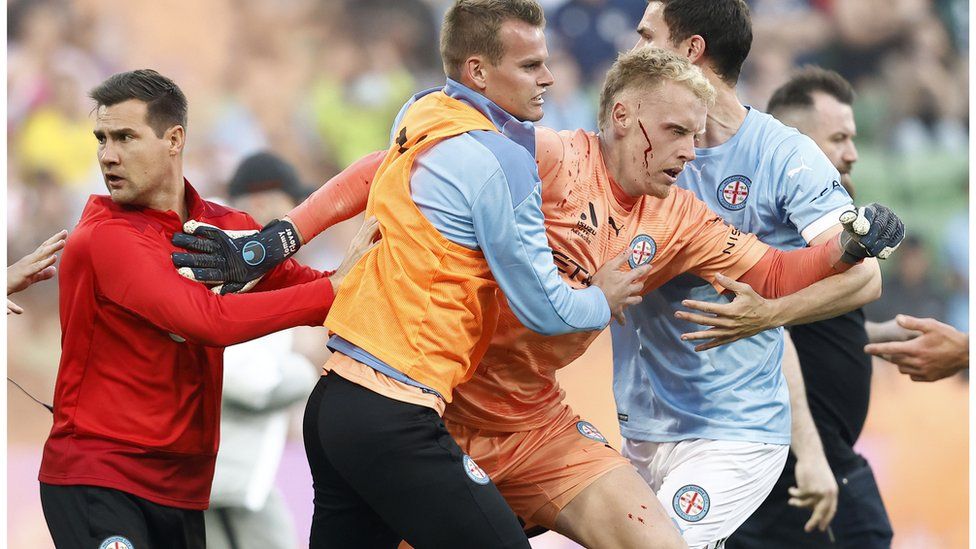
Australian football has been plunged into turmoil this week following violence at a derby match between two of its biggest clubs.
Melbourne City goalkeeper Thomas Glover was left with blood streaming down his face after he was allegedly struck with a metal bucket during a pitch invasion by fans on Saturday.
In a few chaotic moments, the warm glow cast by Australia’s heroic World Cup campaign – in which the Socceroos reached the last 16 – had faded.
“It was just sickening. I was appalled,” Francis Awaritefe, the chair of Professional Footballers Australia, told the BBC. “My heart sank because after the highs of the World Cup where the Australian team performed so well and brought the country together, it was just really sad.”
What had started as a protest by fans against a decision to undo tradition and relocate to Sydney the grand finals of the national men’s and women’s competitions descended into an uncontrolled melee at AAMI Park as Melbourne Victory took on rivals Melbourne City. The match was abandoned and the inquest quickly began.
“What we all witnessed on Saturday night can only be described as horrific and conduct that is not consistent with the values of Australian football nor the expectations of our community,” said James Johnson, the head of Football Australia, the governing body.
Both sets of fans had been hurling flares on to the pitch. The situation appeared to escalate when City ‘keeper Glover picked a flare off the turf and threw it back into the stand where Victory’s most fervent supporters had gathered.
It appeared to ignite the frenzy. Dozens of people poured on to the ground in a wave of disorder that has rarely, if ever, been seen at a football match in Australia. Two security guards and a TV camera operator were also injured, and referee Alex King was also struck by a bucket. Arrests have already been made and more could follow.
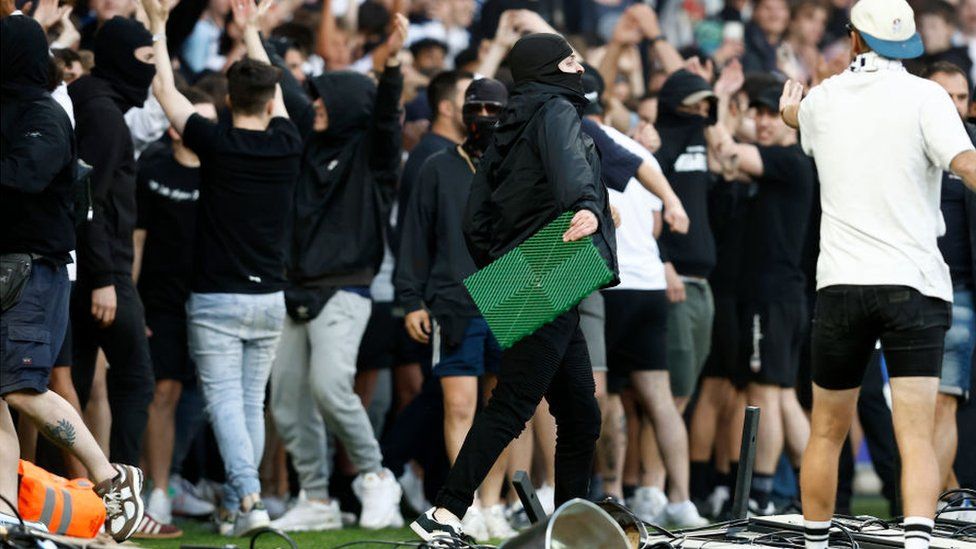
“The game cannot try to spin its way out of this,” Mr Awaritefe says. “If there are fringe elements that are attaching themselves to the game, we need to roundly reject these people. Then we’ve got to use law enforcement to make sure that these people are weeded out.”
Former Socceroo Craig Foster told Australian television that the sport’s reputation had been stained.
“It’s shameful and it’s embarrassing, and it’s a moment that comes after an incredible month for the game,” he said.
“It’s been on this huge high; literally hundreds of thousands of fans getting together at live sites all around the country and watching the Socceroos, and that togetherness and that unity was so beautiful. And then to see this … it’s kind of like going from heaven to hell for a moment.”
The game is in damage control, but no-one knows what the longer-term consequences might be. Melbourne Victory is facing sanctions because of the behaviour of a minority of its fans. The club could be fined, stripped of competition points, or forced to play matches behind closed doors.
Football in Australia boasts unrivalled participation by girls, boys and adults, but at an elite level it lags behind the rugby codes, Australian Rules football and cricket.
Arguably, Australia has never really embraced its national football competition.
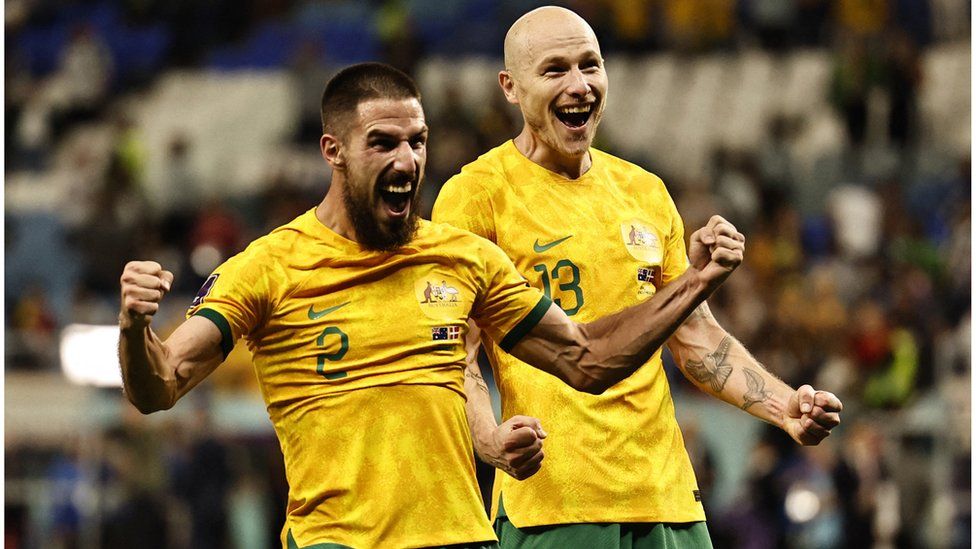
The A-League replaced the National Soccer League and kicked off its inaugural season in 2005. It has 12 teams – 11 from Australia and one from New Zealand.
It’s played in the summer to avoid fixture clashes with most of the other heavyweights, but average attendances are well below 10,000. Saturday’s scenes in Melbourne could stoke further disenchantment at the grassroots.
“The A-League has been on a downward spiral for a while. Prior to the World Cup the game was struggling here a bit even though it’s the highest participation sport,” explained Simon Cox, president of North Sydney United, a thriving amateur club with 1,700 members.
He told the BBC that the violence was a reminder of the bad old days when football in Australia was divided along ethnic lines drawn between migrant communities who’d imported their sporting hostilities from Europe.
“Not only does it bring back memories for those that followed the old National Soccer League and its tribalism – which triggered bouts of bad behaviour – it is behaviour we thought we’d gone past. But it seems to be rearing its ugly head again,” Mr Cox said. “It’s not going to encourage families to go along, which is what the A-League is desperate for.”
But next year Australia has the chance to show the world its affinity and zest for the game.
In July and August 2023, it co-hosts the Women’s World Cup with New Zealand.
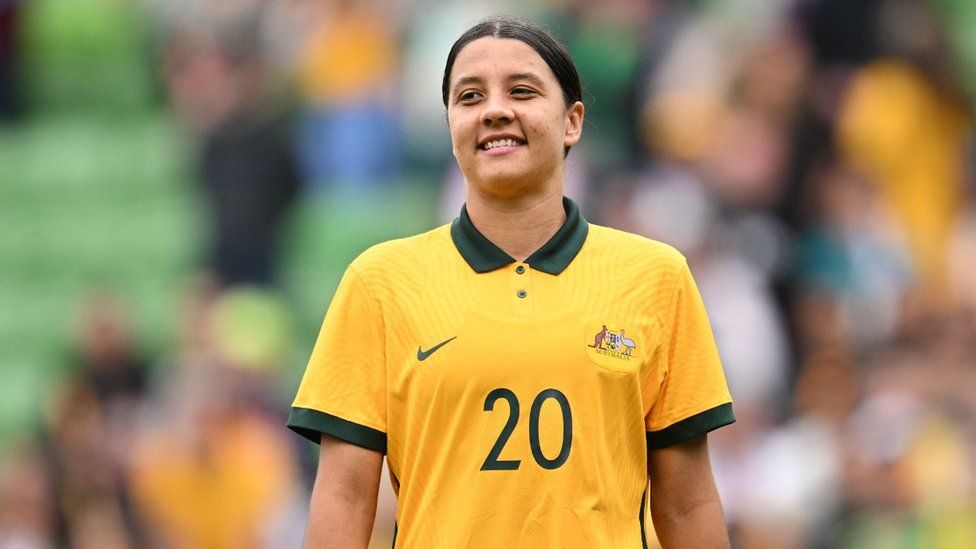
Australia’s Matildas – the national team that includes superstar Sam Kerr – and their supporters will be craving the sort of home-grown success enjoyed by England’s Lionesses at this year’s European Championships.
“The Matildas in terms of their image and women’s football generally is massively on the up here,” said Mr Awaritefe, a former Socceroo.
“Hopefully that will help to bring the country together and to heal some of the wounds that we have suffered in the last few days because of the appalling behaviour of a few.”

